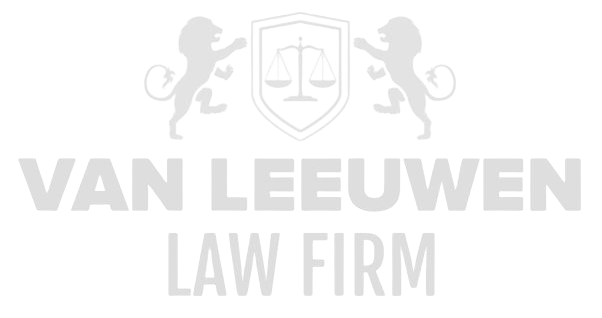The world of money laundering is a shadowy reality where creativity, technology, and legal loopholes merge into an extremely sophisticated game of illusion and deception. What once began with simple methods such as depositing cash in small amounts—so-called structuring or smurfing—has evolved into a global infrastructure of financial camouflage. Criminal organizations no longer operate solely on the fringes of the financial system; they have become an integral part of it. Their playing field is boundless: multinational corporations, fintech platforms, virtual currencies, real estate markets, and even international trade are all harnessed to legitimize illicit financial flows. Money flows are packaged into legitimate transactions, moved through complex chains of financial entities, and concealed from law enforcement through a maze of legal structures. The reality is that money laundering is not merely a legal issue but an existential threat to the integrity of the global financial system.
For C-suite executives—those responsible for the strategic direction of their companies—it is absolutely essential not only to recognize these techniques but also to fully understand their legal and operational impact. They stand at the frontline of risk management. Ignorance in this domain is not an excuse but a blind spot that can lead to severe civil, criminal, and administrative consequences. When money of criminal origin slips unnoticed into the books, not only is the financial continuity of the company at risk, but so is the personal liability of the directors. The bar is set high. Detecting suspicious transactions, gaining insight into cross-border laundering structures, and interpreting seemingly legitimate money flows are core competencies for every responsible director. Legal knowledge is only one component. Effectively combating money laundering requires a profound multidisciplinary approach, where technology, forensic data analysis, governance, and international compliance insights must be precisely aligned.
Money Laundering through Cryptocurrencies
The rise of cryptocurrencies has radically changed the playing field for money launderers. Digital currencies such as Bitcoin, Ethereum, and Monero offer unprecedented opportunities for anonymity, speed, and cross-border transactions without the involvement of traditional financial institutions. These features make cryptocurrencies particularly attractive to criminal organizations seeking to convert illicit profits into seemingly legitimate capital. The absence of central regulation and the pseudonymous nature of blockchain technology mean that tracing the origin of funds is extremely difficult. Although blockchain transactions are public, linking wallets to natural persons is a highly complex task, especially when privacy coins or mixers are used.
The laundering process through cryptocurrencies involves multiple layers of concealment. A commonly used method is the use of so-called ‘mixing services’ or ‘tumblers’, which combine crypto-assets from various sources and redistribute them to obscure transaction histories. This process makes it nearly impossible to trace the original source of the money, even for specialized law enforcement agencies. Moreover, the ecosystem of decentralized exchanges (DEXs), where peer-to-peer transactions take place without a centralized authority, provides a fertile ground for unregulated capital flows. Here, cryptocurrencies are effortlessly converted, exchanged, and integrated into traditional financial systems without the application of standard KYC and AML protocols.
The integration of crypto-assets into laundering schemes is not limited to cyberspace. Increasingly, criminal groups are investing in startups active in blockchain technology. These companies serve as legitimate facades for laundering operations in which investment flows, smart contracts, and tokens are used to move funds through legal channels. By creating apparent value within an ecosystem of digital products and services, a legitimate context arises in which capital is recycled. Criminals thereby operate outside the view of traditional regulators, creating new pathways for normalizing illicit funds.
Legal resilience against these techniques is still lagging behind technological developments. Despite international efforts, such as those by the Financial Action Task Force (FATF), legislation in many countries is not yet adequately aligned with the characteristics of crypto laundering. Supervisory authorities face a shortage of expertise and capacity, while regulation of decentralized systems is inherently difficult to enforce. For executives, this means that incorporating crypto transactions into business processes requires strict compliance, specialized due diligence, and the deployment of forensic blockchain analysis. Without such a proactive stance, any interaction with digital currencies becomes a potential legal time bomb.
Money Laundering through Underground Banking
A particularly persistent and difficult-to-regulate form of money laundering is the use of underground banking, also known as informal value transfer systems (IVTS), such as hawala, hundi, and fei ch’ien. These systems operate outside the official banking sector and use networks of intermediaries to move money worldwide without physical transfers. The appeal of these systems lies in their speed, low cost, and anonymity—features that make them highly attractive to launderers seeking to transfer funds outside the sight of financial institutions and regulators.
Unlike traditional banks, underground banking requires no customer identification, transaction documentation, or reporting to financial authorities. For example, an individual can hand over cash to a hawaladar in Amsterdam, who then calls a contact person in Karachi to deliver an equivalent sum in local currency to the recipient. There is no physical transfer of funds, only a mutual debt acknowledgment between intermediaries. The result is that enormous sums move entirely invisibly and unregistered across borders, with all the risks this entails for integrity policies.
The legal challenge with this form of laundering is twofold. On the one hand, many jurisdictions lack a clear legal framework criminalizing such networks unless it can be demonstrated that they are knowingly used for criminal purposes. On the other hand, detecting these networks is extremely complicated because the transactions evade electronic detection. Law enforcement often depends on infiltration, witness statements, or cooperation with foreign agencies, seriously hampering effective action. Additionally, these networks are often deeply embedded in cultural and familial structures, making them socially difficult to eradicate.
For companies operating in regions where IVTS systems are common, there is a real risk of becoming—knowingly or unknowingly—entangled in money laundering. This may occur, for instance, when payments to suppliers are made through intermediaries without banking involvement or when subsidiaries receive funds from undocumented sources. Directors must therefore be aware of the nature of their financial chain, the payment systems used, and the cultural context in which they operate. Strict contractual terms, detailed transaction controls, and periodic audits are indispensable tools in combating this invisible laundering mechanism.
Money Laundering through Professional Intermediaries
A particularly insidious dimension of money laundering is the involvement of professional service providers—lawyers, notaries, tax advisors, trust offices—as intermediaries in laundering structures. These actors possess the legal knowledge, institutional authority, and instruments to set up complex financial constructions that effectively mask the origin of money flows. Criminals approach them because of their ability to create legally legitimate-looking legal and fiscal vehicles through which illicit capital is recycled into the formal economy. These include trusts, foundations, limited partnerships, and international holdings that serve as smoke screens for the ultimate beneficiaries.
The moral and legal ambiguity in this form of laundering is significant. Professional intermediaries operate at the intersection of legal services and criminal complicity. In many cases, they shield themselves behind professional secrecy, further complicating transparency of their actions. The boundary between legitimate tax planning and criminal facilitation is often deliberately blurred, invoking contractual confidentiality and formal legality. This veneer of respectability makes detection particularly difficult and presents regulators with a major legal challenge.
The role of these professionals in international laundering networks was painfully exposed in the Panama Papers and similar leaks, which revealed how law firms worldwide were used to establish offshore entities, appoint nominee directors, and move funds through a labyrinth of companies. These firms often knowingly turned a blind eye to the origin of the money. The line between client interest and criminal collaboration was disregarded in favor of profit and loyalty to paying clients.
For companies, engaging professional intermediaries must be accompanied by heightened vigilance. Due diligence must not be limited to clients of the company but also extend to the parties involved in supporting corporate structures and transactions. Every professional who creates a vehicle, manages a trust, or sets up a foreign entity must be critically assessed for integrity, transparency, and compliance with AML rules. Otherwise, the company risks becoming an unwitting link in a professionally organized laundering operation.
Money Laundering through Gold, Jewelry, and Luxury Goods
The world of precious metals, jewelry, and luxury goods offers an ideal environment for disguising criminal wealth. These markets are characterized by high value per unit, limited control over origin and ownership, and a tradition of transaction discretion. Gold, diamonds, six-figure watches, and artworks act as alternative currencies within the criminal milieu. They are bought with cash from dubious sources, transported across borders without digital traces, and eventually sold or invested in legitimate transactions, converting illicit money into apparently legitimate assets.
The attractiveness of this sector lies in imperfect oversight. Gold, for example, can easily be melted down into new forms without traceability of origin. Jewelry certification is voluntary or corrupt in many countries, and art transactions often occur via auctions or private deals without mandatory disclosure of the buyer. This creates a shadow market where anonymity is the norm. For launderers, it is easy to transform money into assets that are difficult to trace and that appreciate over time.
The sector is also vulnerable to collusion. Dealers who knowingly or unknowingly cooperate in failing to register transactions, issuing false invoices, or splitting payments contribute to a culture of norm erosion. This is exacerbated by the fact that many countries do not impose mandatory KYC obligations on jewelers or auction houses below certain thresholds, while transactions can easily be split to stay under the radar. This practice makes it particularly difficult for regulators to control money flows through these markets.
Directors of companies active in, or doing business with, these sectors must be aware of the specific vulnerabilities involved. Every transaction in precious metals or luxury goods must be subjected to enhanced scrutiny of the source of funds, the identity of the buyer, and the involvement of intermediaries. Lack of transparency should immediately trigger further investigation. The financial and reputational risks are considerable, especially as regulators are increasingly focused on this blind spot in the global anti-money laundering system.
Money Laundering through Cash
Despite the rise of digital payment methods, cash remains one of the most robust and versatile tools for laundering criminal proceeds. The physical nature of cash provides an unmatched level of anonymity and freedom of movement. Cash transactions leave no digital trace, are difficult to track, and can be carried out swiftly without the involvement of financial institutions. As such, cash is the primary instrument used in the so-called “placement” phase of the money laundering process, where illegally obtained funds are first introduced into the formal economy. The tangibility and universal acceptability of cash also make it highly suitable for use in sectors with high turnover and low margins—such as hospitality, retail, and transport—which are particularly vulnerable to infiltration by criminal entities.
The strategic use of cash typically follows a gradual and structured approach. Criminals employ so-called “smurfing” techniques, in which large sums of cash are broken down into smaller amounts and deposited through various banks, payment points, or even gambling machines. This approach seeks to avoid triggering thresholds for mandatory transaction reporting. The funds are then moved via accounts held by straw men, fake invoices, or fictitious loans to other legal entities. This process effectively dilutes the criminal origin of the funds, rendering them untraceable over time. Because these actions—such as a series of small deposits or cash transactions—may appear innocuous, it is extremely difficult for banks and regulators to detect illicit activity unless there is sophisticated behavioral analysis or an exceptionally vigilant compliance department.
Another commonly used method involves manipulating cash flows within legitimate businesses. Companies with a high proportion of cash revenue—think cafés, barbershops, car washes, fairground operators, and parking companies—are purchased or established by criminals to incorporate illegal cash into legitimate business results. By adding the illicit funds to the daily cash register, the proceeds appear legitimate. This method requires close involvement in the day-to-day business operations and a degree of accounting ingenuity. Often, these businesses are maintained only as façades, with minimal real activity, purely to facilitate money laundering. The risk for businesses that unwittingly transact with such entities is significant: they may become indirectly involved in money laundering, with all the attendant legal and reputational consequences.
Executives would be wise to exercise heightened vigilance—particularly in sectors where cash payments are common—regarding irregularities in cash flows. Internal controls, unannounced audits, and limitations on cash transactions within the company are effective measures. External risks should also be considered: partners or suppliers who insist on cash-only payments, companies with unusually high revenues relative to market conditions, or sudden changes in payment behavior may indicate underlying laundering structures. In an era when the global fight against financial crime is becoming increasingly digitized, the old-fashioned brown envelope remains a formidable vector for financial corruption.
Money Laundering via Laundromats
A particularly advanced and systematic form of money laundering involves the use of so-called “laundromats”: extensive networks of shell companies, mailbox firms, banks, and intermediaries used to move and clean massive amounts of criminal money with surgical precision. The Russian and Azerbaijani laundromats, exposed through major investigative journalism projects, painfully revealed how billions of dollars were transferred through sham transactions via a web of legal entities, often based in jurisdictions with limited transparency such as Cyprus, Latvia, the British Virgin Islands, or Scotland. These systems are designed with a singular goal: to obscure the origin of funds so thoroughly that even the most experienced financial investigators lose the trail.
A laundromat generally operates in a cyclical process where criminal funds are introduced into an offshore entity via a sham loan, consultancy agreement, or other fictitious contractual relationship. The money is then moved through multiple intermediary accounts and currency conversions, often using mailbox companies in various countries. These links ensure that the money passes through several legal and financial contexts during its journey, thereby fading the original trail. Ultimately, the funds end up in “clean” businesses, real estate projects, art collections, or even as bribes to politicians. The entire process is often facilitated by professional service providers and banks that either knowingly participate or fail egregiously in their gatekeeping duties.
The legal problem with laundromats is that they often operate within the bounds of formal legality. Each individual transaction may appear legitimate when viewed in isolation. Only by analyzing the entire pattern—the frequency, the nature of the parties involved, and the routing of the funds—does the laundering activity become apparent. This form of money laundering therefore requires an integrated and cross-border approach, bringing together information streams from various jurisdictions and sectors. Traditional compliance processes are often inadequate, especially since many transactions occur outside the banking system, through so-called shadow banking systems or parallel structures.
For the C-suite, this presents a fundamental responsibility. Any company operating internationally and transacting with entities in high-risk areas must have a system that goes beyond superficial compliance checks. Advanced transaction monitoring, pattern recognition, and structural reassessment of business relationships are indispensable. Furthermore, a corporate culture must exist in which unusual patterns are not ignored but investigated—even at the expense of business opportunities. Failing to identify a laundromat structure within one’s trade network can lead to complicity in international money laundering networks, with far-reaching legal implications.
Money Laundering through Foreign Legal Entities
The use of foreign legal entities as vehicles for money laundering is a tried-and-tested yet still highly effective strategy for masking ownership structures and the origin of funds. Legal entities in countries with weak transparency requirements or where shareholder information is not publicly registered are particularly attractive to money launderers. Trusts, foundations, Limited Liability Companies (LLCs), International Business Corporations (IBCs), and hybrid entities are often established with a single purpose: to obscure money flows and create legal distance from the ultimate beneficiary.
These structures serve as legal shields. By using nominee directors, fictitious shareholders, and cascading ownership—where one foreign entity owns another, which in turn holds shares in a third—an impenetrable labyrinth is created for outsiders. In many cases, capital is subsequently moved via seemingly legitimate transactions such as loans, royalty payments, or consultancy fees. Each of these transactions is formalized through legal documents that, without the broader context of the entire network, rarely raise suspicion.
The problem with such constructs is not only that they severely hinder investigation, but also that they pose a risk to inattentive or naive companies who may engage with them as business partners. For example, a company entering into a joint venture with a foreign partner—without full transparency regarding the underlying ownership structure—could unknowingly participate in a money laundering operation. This risk is amplified in sectors where cross-border cooperation is common, such as energy, fintech, pharmaceuticals, and international trade. In these industries, ownership transparency is not merely a matter of due diligence, but a legal survival strategy.
For the C-suite, this means that conducting Enhanced Due Diligence (EDD) on foreign entities is not an optional luxury but a mandatory risk management step. Executives must ensure full visibility into Ultimate Beneficial Owners (UBOs) and avoid relying on third-party declarations without independent verification. Any attempt by a business partner to conceal, delay, or distort ownership information should be treated as a red flag. In the legal arena, acting without knowing who you are dealing with is skating on thin ice—an icy surface on which even the most powerful enterprise can slip into criminal liability.
Money Laundering through Gambling
Gambling in both physical and digital environments offers money launderers a particularly attractive toolkit to legitimize illegal cash flows. Both traditional casinos and online gambling platforms are used to funnel criminal money obtained in cash or digitally into the formal financial system under the guise of seemingly innocent transactions. This method of laundering is not only widespread but also extremely difficult to detect due to the nature of the gambling industry: high turnover rates, large sums of money, frequent deposits and withdrawals, and a culturally embedded tolerance for losses and winnings without direct justification. These very characteristics make the gambling field an ideal façade for concealing the origin of criminal capital.
A classic method involves purchasing a substantial amount of chips with cash, with minimal or no actual gambling activity intentionally conducted afterwards. The leftover chips are then exchanged back for money, providing proof of payout that gives the illegal funds an appearance of legitimacy. In some cases, a small bet is intentionally lost so that the remaining amount can be justified as winnings. The payout receipt, usually bearing the logo and timestamp of a reputable gambling institution, is subsequently used as proof for bank deposits or investments in legitimate assets. In this context, the casino environment acts as the legitimizing link in the money laundering process.
The rise of online gambling has further evolved this practice. Online platforms, whether regulated or not, allow players worldwide to open accounts, deposit funds in cryptocurrency or regular currency, and then engage in virtual gambling activities. By creating multiple accounts—often under the names of straw men or fictitious persons—large sums of money can be “cycled” within the platform, followed by withdrawals to bank accounts or e-wallets. These processes are extremely difficult to trace, especially when the operator is based in a jurisdiction with weak regulatory oversight. Additionally, some providers use embedded wallets that allow winnings to be transferred directly to prepaid cards or other convertible means, further enhancing anonymity.
The legal issue becomes more acute when gambling licenses are misused or issued in jurisdictions without robust anti-money laundering regimes. Some states or territories apply extremely liberal licensing requirements or actively engage in “regulatory arbitrage”—attracting gambling companies through low compliance standards. This creates a parallel economy where supervision is barely enforced and where launderers can operate unhindered under the guise of gambling operations. Moreover, casinos in some cases are deliberately owned or affiliated with criminal organizations that use their infrastructure as laundromats for proceeds from drugs, human trafficking, or corruption.
For the boardroom, this means that involvement in the gambling industry—direct or indirect—must be approached with heightened risk awareness. This applies not only to investments in gambling companies but also to business relationships with parties whose revenue partly derives from gambling. Transparency in transaction flows, identification of money streams per user, and cooperation with recognized regulators are essential to avoid liability. Directors who fail to verify the origin of funds or who blindly rely on licenses without due diligence risk being complicit in facilitating large-scale money laundering practices.
Money Laundering through Real Estate
The real estate sector is especially a terrain where criminals can convert their illegal profits into durable and value-retaining assets. Buying, selling, and financing real estate offer a range of opportunities to camouflage the criminal origin of funds, partly due to the high values involved in real estate transactions, relatively limited scrutiny of fund origins, and the complex legal structures that can be established around ownership and financing. From luxury apartments in global cities to agricultural land in developing areas—real estate is the ultimate reservoir where black money is converted into seemingly legitimate property.
A common method involves buying real estate with cash or through legal entities where the ultimate beneficial owner is unclear. Sometimes the property is registered under the name of a family member, straw man, or foreign entity to create distance between the buyer and the illegal capital. The property is then resold, often at a supposedly market-conforming price, with proceeds deposited into a bank account, typically supported by a sales deed. In this way, criminal money is “washed” through an apparently normal real estate transaction. A more sophisticated variant uses mortgage structures where illegal funds finance real estate through loans to third parties.
The use of renovation and development projects is also a popular laundering technique. Here, construction costs are exaggerated, invoices manipulated, and false labor contracts drawn up to process illegal funds within the project’s cost structure. This is especially true for international projects in emerging markets where supervision is weak and “off-the-books” transactions are more the rule than the exception. Once the project is completed and the real estate sold, the money appears to come from legitimate construction or development activities. By involving domestic and foreign advisors, real estate funds, and notaries, the network of involved parties expands and oversight becomes diffuse.
The legal vulnerability of these practices is evident. In many countries, mandatory registration of the ultimate beneficial owner (UBO) for real estate transactions is lacking, cash payments are allowed to some extent, and oversight of notaries or real estate agents is fragmented. These gaps allow criminals to use real estate as a laundering instrument without effective intervention from authorities. Only when there is international cooperation between tax and financial investigative services does the extent of such laundering structures come to light, as has been seen in investigations into real estate in London, Vancouver, and Dubai.
For directors and investors in real estate, this means every transaction—whether acquisition, financing, or development—must be subject to extensive compliance procedures. This includes full transparency regarding the origin of funds, documentation of involved entities, due diligence on chain partners, and periodic audits of real estate portfolios. Ignoring this responsibility can lead to criminal prosecution, seizure of real estate, reputational damage, and administrative sanctions. In the world of real estate, not everything that glitters is gold—sometimes it is just a shiny façade for laundered darkness.
Trade-Based Money Laundering
One of the most advanced, yet least understood forms of money laundering is Trade-Based Money Laundering (TBML). This method exploits the complexity of international trade—including logistics, financing, and customs processing—to camouflage, move, and integrate criminal money into legitimate trade flows. The essence of TBML lies in manipulating trade documents and invoices to move money across borders without the physical goods flows or corresponding payments matching the economic reality. The scale of international trade, the many involved actors, and the lack of uniform regulations make TBML an especially effective money laundering strategy that is very difficult to detect.
A common technique within TBML is over- or under-invoicing of goods. For example, a shipment of clothing with a market value of €50,000 might be invoiced at €250,000 so that the buyer in another country has a legitimate reason to transfer a large sum of money. The difference between the real value and the invoiced amount is effectively laundered money entering the financial system legally. In other cases, low-value goods are classified as high-value products, or shipments are entirely fictitious—without anything ever physically shipped. Using complex trade documentation, multilingual contracts, and a network of freight forwarders and intermediaries makes it nearly impossible to verify the authenticity of every step.
The use of back-to-back transactions also plays a central role. Goods are transported via multiple countries or companies, with each intermediate step accompanied by new invoices, pricing, and customs declarations. This chain makes it extremely difficult for regulators and banks to identify the ultimate beneficiary, let alone the real value of the transaction. This technique is often combined with fake transport documents, insurance policies, and letters of credit, which collectively create an illusory image of a legitimate trade transaction. Criminal networks exploit the same tools used by legitimate international companies for risk management, which further complicates detection.
The legal and economic risks of TBML are enormous. Not only are huge sums laundered—estimated by FATF at hundreds of billions of euros annually—but these practices also distort markets, undermine fair competition, and weaken trust in the financial system. Furthermore, TBML is often combined with other criminal activities such as tax evasion, fraud, sanctions evasion, and corruption. The international dimension means effective combatting is only possible with cross-border cooperation between customs, financial investigative services, banks, and compliance professionals.
For companies active in international trade, this means a deep understanding of their logistics chain and transaction structures is necessary. It is insufficient to rely solely on external customs agents or freight forwarders. There must be internal capacity to analyze trade flows, verify pricing, and screen parties in the chain. The responsibility for compliance lies at the top of the organization. Any blind spot in the trade chain can be exploited as an entry point for criminal capital. Trade is no excuse for ignorance—it is an arena where precision, transparency, and integrity make the difference between legitimate globalization and institutionalized money laundering.








